Every Command & Conquer game, ranked from worst to best
Command & Conquer's many thematic twists and turns make it one of the most varied strategy series on PC.
Ranking the C&C games against each other is a daunting prospect. The series features so many thematic shifts and overhauls of its gameplay that one fan’s “best in series” is another’s “weird disappointment that shames the C&C name.” It’s this innovation and refusal to churn out samey sequels that made Westwood’s strategy games an extremely fun, memorable series beloved by a passionate audience—but it also means no matter how I rate them, someone will consider my decisions absolutely heretical.
There’s two things most of us can agree on, though; firstly, that Westwood’s eventual dissolution was a tragedy. Secondly, that when ranking the series from worst to best, there’s an easy game to start with.
Command and Conquer 4: Tiberian Twilight (2010)

C&C4 is so far removed from the talent and inspired design that made the original games great that I can barely even recognize it. Create an online account and play in timed team-vs-team matches. Pick a class and then spew a series of generic future-tanks and laser-armed robots from your mobile factory to capture strategic points. Buy upgrades for your units and use their special abilities as they counter each other in rock-paper-scissors gameplay. Witness the shallow breathing of this drained husk that was once a proud game series.
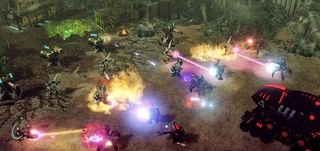
EA’s takes on C&C have always been sparse on new ideas, but C&C4 marks the point where they stopped bothering to even try copying Westwood’s old ones, preferring to instead take a hodge-podge of features from whatever other games were popular at the time and mash them together. It’s a tragic but inevitable end for the series—after EA bought Westwood in 1998 and then closed the studio in 2003, firing the people who created the series with innovation and passion, C&C survived in name only.
It’s not that they messed up the series’ beloved formula, they completely destroyed it. Resource harvesting no longer exists. You pump out a stream of units stopping only when you hit the population cap, then throw them at the enemy in a constant slog of attrition, your options restricted by your ‘class’—frontline brawlers, base buildings and aircraft split up between offense, defense or support roles. It’s no longer about destroying your enemy, but simply holding control points until you’re victorious; should you wipe out an enemy they just respawn in a new construction vehicle to continue the tug-of-score. For the last entry in a series full of great memories, C&C4 couldn’t be more forgettable.
Command and Conquer: Sole Survivor (1997)

The silver lining of EA’s mutilation of the C&C franchise is that Sole Survivor isn’t the worst game in the series. Great job, Sole Survivor!
This game is one most C&C fans have probably never heard of, much less played. But Sole Survivor really exists—or existed, anyway, back in late 1997 as a spin-off to the original Command and Conquer. Players selected a single unit from C&C and battled online in matches of up to 50 opponents, collecting power-up crates around the map to grow stronger.
The biggest gaming news, reviews and hardware deals
Keep up to date with the most important stories and the best deals, as picked by the PC Gamer team.

But it was barely developed beyond this simple concept—Sole Survivor would’ve been better served as a multiplayer mode in the original game than as its own spin-off title. With some more time and effort, this online battle arena could’ve had a more beloved place in gaming history; playing a deathmatch as a single unit in an RTS was a fun idea, but it needed greater depth and complexity. Like, maybe a team-based mode played on a segmented map where the units tried to kill each other's bases along with AI-controlled troops… and perhaps every time you killed an enemy, you could’ve earned money to buy those upgrades rather than just finding them in crates. That might’ve been popular.
Command and Conquer: Red Alert 3 (2008)

If you asked people to summarize what they remember most fondly about Red Alert 2, they’d probably say the crazy units, the hammy FMV cutscenes, and the B-movie styled alt-history cold war setting. If you gave that input to a robot and told it to make a game, you’d get Red Alert 3. Did you love RA2’s Mirage Tank and it’s amusing tree-stealth? Don’t worry, it’s back. How about the Allied IFV and its clever configurable weapons system? It’s back too! Remember the lumbering Kirov Airship and the terror you felt as it droned towards your base? GUESS WHO’S BACK!
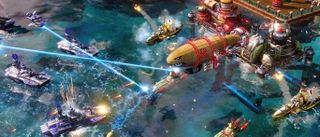
Bringing back iconic units in itself isn’t the issue—it’s that trying to imitate RA2 is all the game knows how to do. And the problem with that is it highlights just how much better Westwood was at designing an RTS.
The result is three armies of units all crippled with bloat.
RA2’s gameplay features were taken to their extreme, most notably the way that every damn unit in RA3 has an activated ability. Leech Beam. Aegis Shield. Turbo Charge. Paralysis Whip. Even the damn attack dog has a “Sonic Bark.” It’s a hamfisted attempt to build upon RA2’s interesting and unique units. Where RA2’s units had their quirks built into their standard functions like moving or attacking, RA3 simply takes a bucket full of different powers you could find in any MOBA and throws them at you. The attack dog doesn’t have a sonic stun-bark because it needs it for its early anti-infantry defense role; it has one because RA3’s unit design is “the more abilities we can chuck on these units, the better.” Unfortunately, quantity does not equal quality, and the result is three armies of units all crippled with bloat, an excessive number of buttons to press that are unnecessary at best, overwhelming at worst.
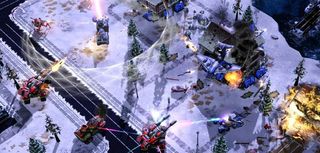
Gameplay is only one half of where RA3’s units stumble; their aesthetic design is another poor attempt at imitation. RA2's wackier units were the highlights in a mostly conventional army. When you saw a Giant Squid rocking a Destroyer to death or Yuri’s flying saucer woo-wooing around and stealing your money, it was weird by comparison. RA3’s units are all weird. We have attack bears and shrink-ray helicopters and a cannon that launches your units, just like how crazy RA2’s units were! We have a new Japanese faction with anime-like robo-units and psychic schoolgirls! The Flak Trooper is complaining about gulags and we paid Tim Curry and George Takei to chew the scenery just like Romanov and Yuri! Please remember how much you loved RA2.

The game’s complete jump to future tech hardly helps—where RA2’s unit aesthetic was largely '80s era equipment with experimental tech thrown in, RA3 is some vague future-mixed-with-past blend of cutting-edge future war and WWII Soviet design. There are no weird, future-science experimental unit standouts of RA3’s roster—they’re all weird experimental units, and it’s harder to identify with them as a result. It’s another example of RA3 taking a fun highlight of its predecessor and then making that highlight the whole design—an approach that gets lost in its own pandering and fan service while bringing little of value to the series.
Command and Conquer 3: Tiberium Wars (2007)
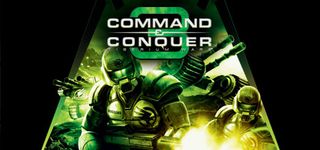
So far we’ve discussed two games I find somewhat offensive as a C&C fan and one that was barely its own game at all. That brings us to C&C3, a game that wasn’t bad, but wasn’t amazing, either.
Set in the dark, apocalyptic environment of Tiberium Sun, C&C3’s setting is tried-and-true, and the SAGE engine does a good job of presenting its dusky, desolate terrain. Its units are about what you’d expect—riflemen, rocket troops, APCs, medium and heavy tanks, and so on. You build bases, harvest Tiberium, and spend it on units to throw at each other. There’s campaigns full of cheesy FMV where Michael Ironside, Grace Park and Tricia Helfer advise you, and Billy Dee Williams goes nuts and yells at you to launch a doomsday bomb. It is undeniably a C&C game.
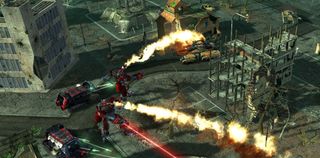
And yet, it’s a forgettable one. Between the engine, the gameplay, and the setting, there’s not much new in C&C3 that wasn’t already in Tiberium Sun and Generals. For a sequel four years in the making, it wasn’t nearly fresh enough to be a memorable new chapter in Command and Conquer history. Instead, it simply serves as the beginning of the series’ journey from innovation to mediocrity—and as the first C&C made entirely without Westwood or Westwood Pacific, it’s not hard to guess why the magic was gone. Red Alert 3 was poorly made, but C&C3 raises no such ire from me—it’s an attempt to reverse-engineer greatness that was neither good, nor bad, just average.
Command and Conquer: Renegade (2002)

Ah, Renegade. As a C&C fan my whole life, I was so excited to watch Renegade’s trailer—granted, I was 12, but the point is that the potential of the perspective shift seemed so enticing. I encourage you to watch it yourself and try to imagine just how cool this was to someone like me—someone who’d spent countless hours commanding little men and tanks in this game world, and was now watching a trailer about being one of those little men in that same world.
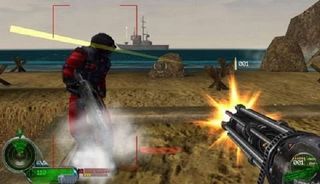
If you do watch it, you’ll probably notice how hilariously dated Renegade looks. As Westwood’s first foray into an FPS, Renegade’s gameplay wasn’t great, particularly when you remember players had spent years with Half-Life, Quake, Counter-Strike and Unreal Tournament by the time it released. Though it did feature extensive vehicle combat alongside its infantry gameplay, even Battlezone II and Codename Eagle each preceded Renegade by multiple years and did its combined arms better, and with Battlefield 1942 only a few months from release, there was no shortage of games for Renegade to be unfavorably compared against.
But just like the trailer emphasizes, it wasn’t about being a great FPS, it was about being a soldier in Command and Conquer. Renegade did accomplish that, taking players through a hearty campaign of first-person destruction against an entire army of Nod soldiers, bases, and vehicles. Its multiplayer also proved popular—enough so for fans to create Renegade X, a modern remake of the game’s online play for a whole new generation. While it was certainly a flawed game, Renegade’s combination of FPS and nostalgia won enough hearts to earn its status as a beloved title for many C&C fans.

If you love big trucks, establishing trade routes, and the phrase 'post-apocalyptic survival business simulator' then I've got just the strategy RPG for you

Blizzard veteran David Kim's strategy comeback with Battle Aces is 'very personal:' 'I just can't accept... the end-all peak of RTS is StarCraft 2 and nothing can ever be better'
Most Popular


